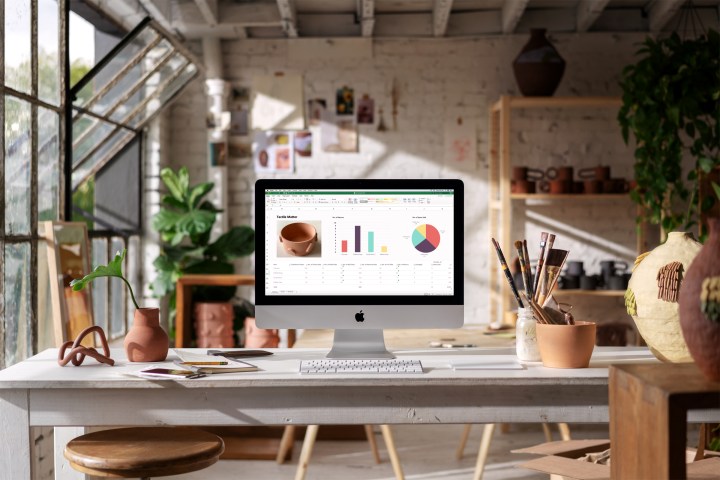
On Tuesday morning, Apple announced some long-awaited updates to the iMac lineup. Finally!
It’s nothing game-changing, but it’s just what the iMac needed to keep it a competitive machine. The updated processor options, which now range up to the eight-core Core i9 on the 5K model, will be a big draw for content creators and anyone who needs some extra power. The same goes for the new Vega graphics options.
At first glance, that is.
When you dig into the details, you’ll find that these new iMacs have a shockingly old component on the inside. A spinning, mechanical disk drive. That’s right — the company that pioneered bringing solid-state drives to laptops is selling a new desktop without an SSD in it.
Instead, Apple has opted to keep its “Fusion Drive” as the base storage option for all iMac models, including the $2,699 Core i9 model. Unlike most modern desktops (and laptops), the solid-state option doesn’t come standard — it’s an add-on. It’s only $100 to swap the Fusion Drive for an SSD of half the capacity, but it only goes up from there. To trade out a 1TB Fusion Drive for a 1TB SSD, it’ll cost you $700. To swap in a 2TB SSD, it’s an extra $1,100.
To be fair, the Fusion Drive isn’t as slow as other mechanical hard drives. It has a small solid-state cache in it that smartly boosts speeds when you’re opening applications or switching between them. Even still, when we tested it, the read and write speeds pale in comparison to a tried-and-true SSD. In large file transfers, you’re going to notice.
More than that, it feels a little misleading. The average iMac buyer might not know the difference, or that types of storage can bottleneck your performance. They might just assume when you spend over $2,500 on a computer, it’ll have the fastest components without having to dive too far into the configurations. In the case of the new iMacs, that’s not necessarily true.
Our recommendation? Well, even if you’re on a budget, you’re better off picking up at least a lower-capacity SSD on your new iMac. That’s especially important given that you can’t upgrade these things in the future. You can always plug in an external SSD for extra capacity down the road.
Editors' Recommendations
- Are you having iPhone alarm problems? A fix is coming soon
- The one problem with Mac gaming no one is talking about
- MacBooks could soon fall behind the iPad Pro in this important way
- Apple could fix the MacBook lineup with this one change
- My hopes for a new iMac Pro have been dashed — for now


